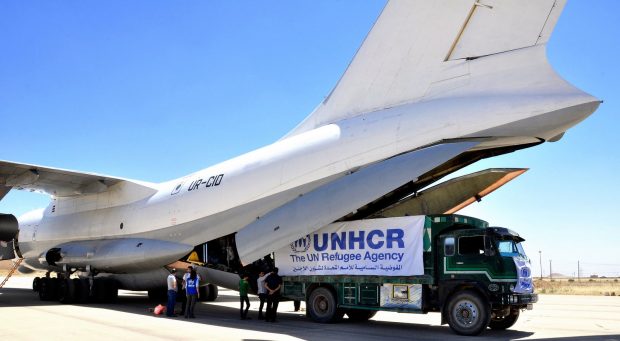UNHCR evacuated 136 migrants from Libya to Niger on February 2nd

There, their case will be processed to find a durable solution, including resettlement. With this flight, UNHCR has evacuated 674 refugees from Libya (512 to the Niger ETM and 162 to Italy). UNHCR continues to identify and process vulnerable cases for resettlement and other durable solutions, including from its urban caseload.
As of 31 January 2018, the Libyan Coast Guard (LCG) rescued/intercepted 1,693 refugees and migrants at sea, a slight increase compared to the previous month.
This week, over 262 individuals were disembarked at Tripoli Naval Base, with over 124 individuals disembarked on 29 January alone. UNHCR and its partner International Medical Corps provided primary healthcare, hygiene kits and identified persons in need of international protection both at the disembarkation point and at the detention centre where they were subsequently transferred. In line with recent movements, boats departed from areas west of Tripoli near Zwara and areas east of Tripoli near Garabulli.
UNHCR is implementing quick-impact projects benefiting to internally displaced persons (IDPs), returnees and host communities in Libya.
This week, through its partner Mercy Corps, UNHCR completed the refurbishment of sanitary facilities serving 2,400 IDPs in the Seraj settlement. Thanks to this intervention, the community now has access to improved toilets, showers, basins and a potable water system. In the Sidi Sayah IDP settlement, where 3,000 people are currently living, UNHCR and Mercy Corps conducted a disinfestation to eradicate the spread of diseases and rodents from the location. In addition, the teams delivered school desks to the Alfatah’s school in Tripoli, which currently hosts more than 700 students. Before the project implementation, there was only one desk for three students. The school had not undergone maintenance works since 2012. In coordination with Libyan authorities, UNHCR will implement more than 200 QIPs throughout 2018 to respond to the humanitarian needs of IDPs, returnees, refugees and hosting communities, in accordance with the 2018 Libya Humanitarian Response Plan.
On 30 January, UNHCR met with representatives of the IDP Commission linked with the Prime Minister’s Office, the IDP Committee of Tripoli and mayors of 13 municipalities from western, eastern and southern Libya, with a view to discussing needs, coordination and support of UNHCR to Libyan IDPs, returnees and host communities.
There are 46,730 refugees and asylum-seekers registered with UNHCR in Libya.
In January alone, UNHCR registered 1,609 refugees and asylumseekers from Sudan (43%), Eritrea (30%), Syria (10%), Somalia (8 %), Ethiopia (5%), in addition to other nationalities. UNHCR is advocating with authorities to be allowed to register asylum seekers regardless of nationality. Men represent 52% of the total registered population, while women and children account for 17% and 31% respectively. Overall, Syrian nationals remain the largest registered caseload for UNHCR (48% – 22,313 individuals), followed by Palestinians (15% – 7,025 individuals) and Eritreans (12 % – 5,632 individuals).
How to submit an Op-Ed: Libyan Express accepts opinion articles on a wide range of topics. Submissions may be sent to oped@libyanexpress.com. Please include ‘Op-Ed’ in the subject line.
- Libya’s HCS invites applicants for key state roles - December 31, 2023
- UK calls on Iran to prevent escalation in Israel-Hamas conflict - November 05, 2023
- Libyan Interior Minister: Immigrant shelter costs a fortune - November 05, 2023


